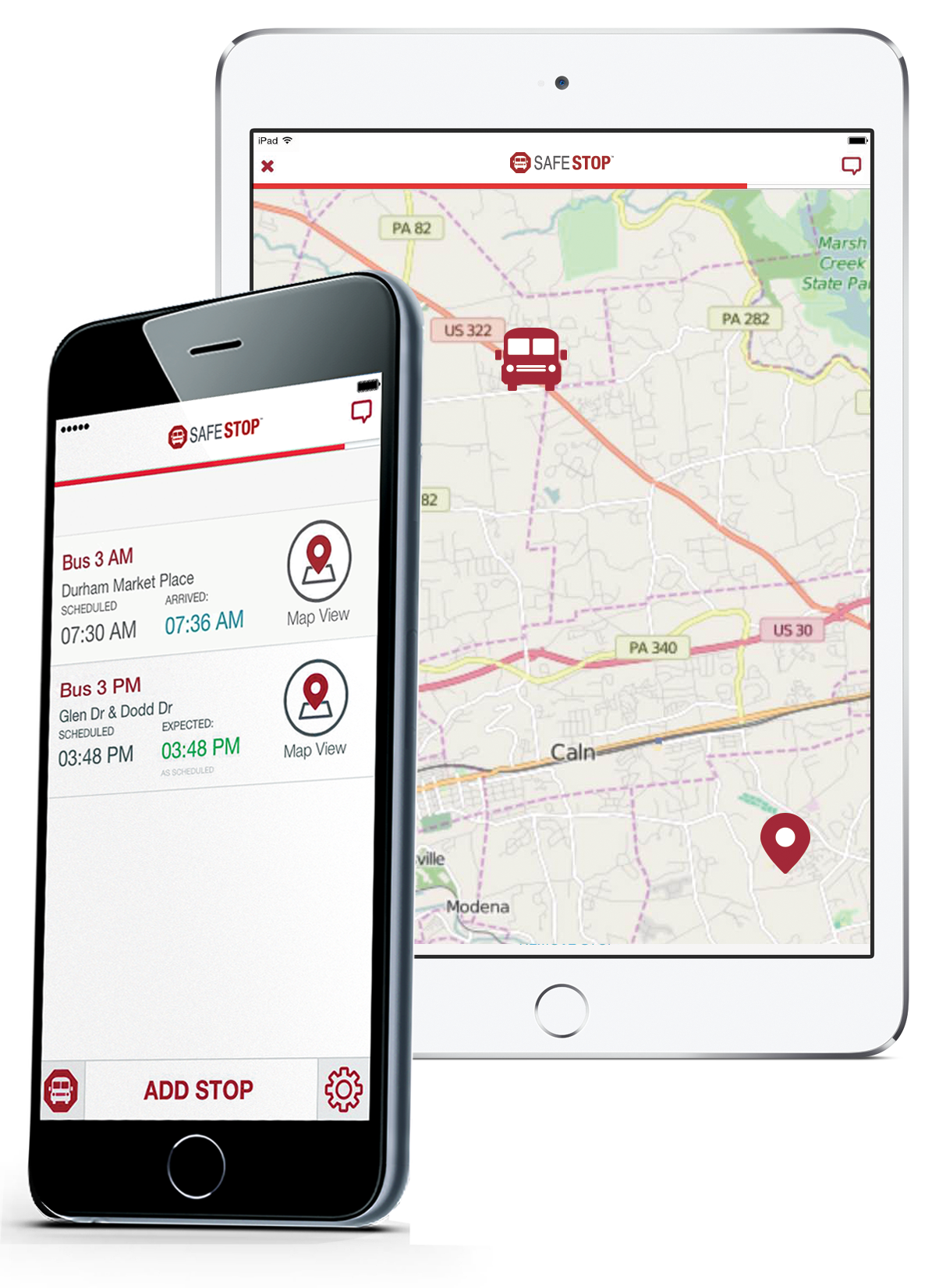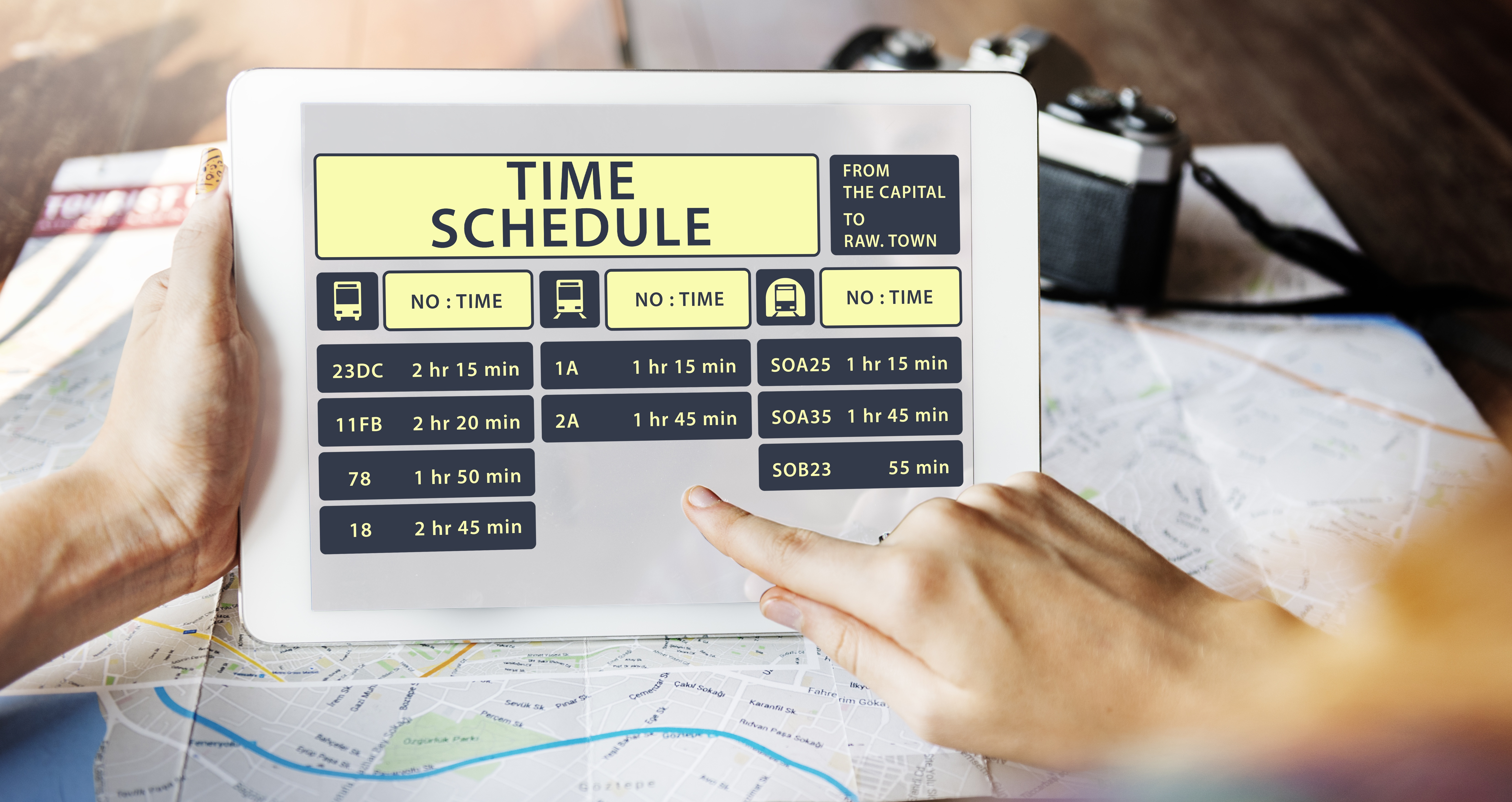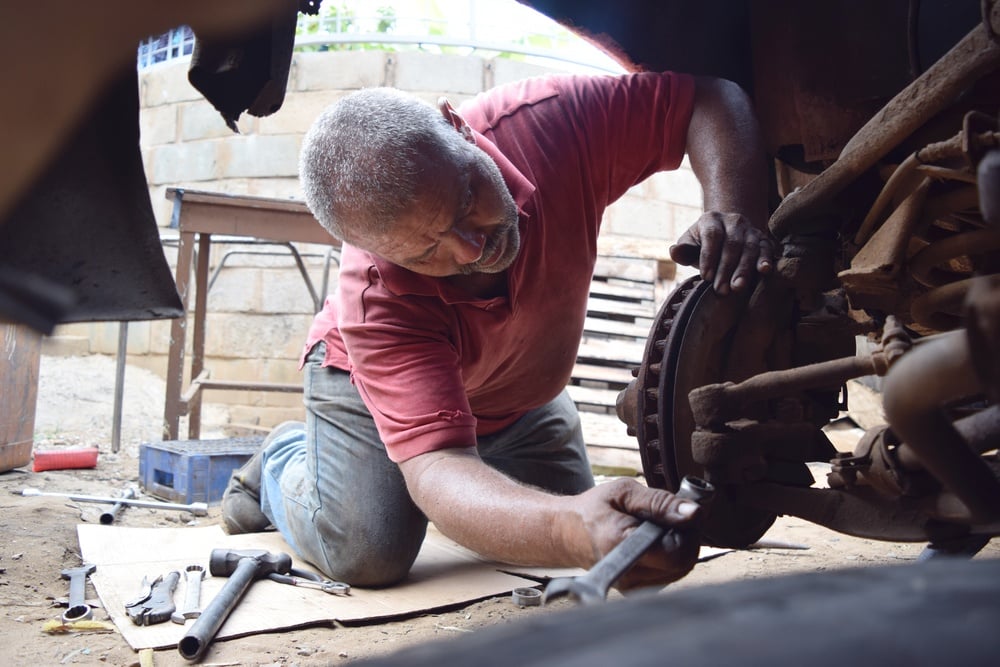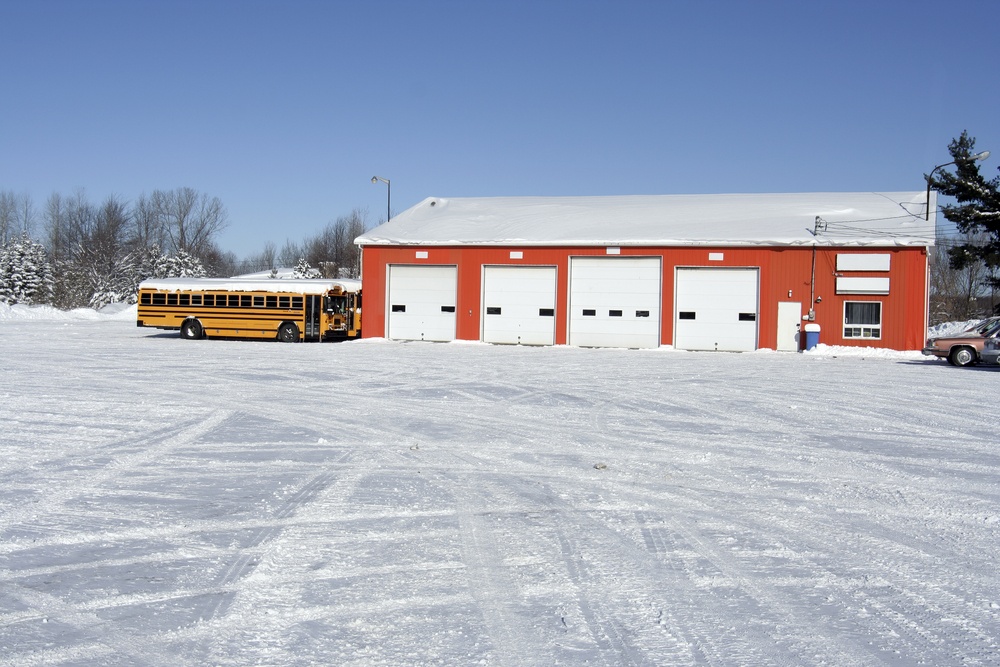When people think about bus tracking software, it can be difficult to imagine exactly what happens as the app inputs and outputs data for parents, transportation departments, and school officials. SafeStop produced an easy-to-read infographic that gives a snapshot of how routing and GPS data from local transportation departments create a reliable vehicle tracking system for everyone involved.
On the local side, transportation staff in the school district maintain their routing and scheduling systems on a regular basis, which feeds data into SafeStop’s system to create tracking updates, in-depth fleet analytics, and customer service information. Each night, SafeStop imports updates about routes and bus stops — the “planned” data — and pairs it with GPS data from devices on-board the school buses — the “actual” data — to continually update the app. At the same time, the SafeStop Analytics platform uses an application programming interface, or API, to mine both sets of data to inform transportation staff about its school bus fleet, including speed, location, and expected arrival times at bus stops.
Potential hiccups occur when the planned data and actual data conflict, and pick-up/drop-off times may vary based on what school buses are actually doing on the road. If students aren’t at a stop for instance, a bus may arrive early at the next stops. If a bus is out-of-service for repairs, a replacement bus goes on the road in its place and information about the replacement vehicle must be sent to SafeStop for the app to be updated.
When the planned versus actual routes correlate and run smoothly, parents can be assured about the correct pick-up/drop-off times, transportation staff can have more accurate and helpful reports, and administrators can keep an eye on their customer service, school fleet efficiency, and transportation budget.
Every day, if local transportation staff can ensure that buses are assigned to their correct routes, SafeStop is able to offer tracking capabilities on the parent-facing app, analytics on the administration backend, full customer service for parents and administrators alike, and report cards to show district leaders what to fix, where to look, and how to respond to improve school bus fleet operations.
Topics: School Buses, Bus Tracking App, GPS, students, parents, school bus tracking
BLOG SERIES: What to Know When Considering a Tracking App // PART 4: Troubleshooting
Topics: School Buses, Bus Tracking App, GPS, students, parents, school bus tracking
BLOG SERIES: What to Know When Considering a Tracking App // PART 3: How to Manage Parent Expectations
Topics: School Buses, Bus Tracking App, GPS, students, parents, school bus tracking
BLOG SERIES: What to Know When Considering a Tracking App // PART 2: The Timeline You Can Expect
Topics: School Buses, Bus Tracking App, GPS, students, parents, school bus tracking
BLOG SERIES: What to Know When Considering a Tracking App // PART 1: Taking Stock Before Roll Out
Topics: School Buses, Bus Tracking App, GPS, students, parents, school bus tracking
5 Stats You Didn't Know About the School Bus Industry
Yellow school buses are an everyday fixture in our neighborhoods and communities, yet there’s a more complex story behind the design, safety and routes that transport students to and from school. School bus carriers operate the largest mass transportation fleet in the country, and the industry itself is projected to grow even more during the next five years. This includes the traditional school transportation industry as we’ve known it for decades, as well as school bus-related technology including fleet telematics and school bus tracking apps.
Topics: Bus Safety, School Buses, Bus Tracking App, Student Transportation, Child Safety, school bus tracking, transportation system, school bus routes, school bus
Getting There and Back: Maximizing Bus Route Efficiency and Safety
Topics: School Buses, Safety, Student Transportation, Weather
Want to Save Money and Keep Kids Safe? Put a GPS Tracking Device on Every School Bus
Throughout the United States, school districts are onboarding a GPS tracking device on every school bus in an effort to keep students safe and save money.
These days, a global positioning system (GPS) is seamlessly integrated into smartphones. While paper maps are nice, it is easier to check your phone for directions, estimated time of arrival, and traffic slowdowns along the way. School districts are beginning to take advantage of this technology for similar reasons.
At the start of this school year, Rutherford County schools in Tennessee equipped all 250 of their school buses with a GPS tracking device. The growing school district buses over 25,000 students each day, and that number is rapidly increasing.
Topics: Bus Safety, School Buses, Safety, Bus Tracking App, Schools, GPS, Weather
Preparing your school bus fleet for the winter months can save you time by preventing malfunctions and money in potential repairs. One key area of focus that is sometimes overlooked is maintaining and replacing shock absorbers. Failure to inspect and repair damaged or malfunctioning shocks can lead to more than just an uncomfortable ride — it can cause unsafe driving conditions.
Topics: Bus Safety, School Buses, Safety, Student Transportation, Weather
For kids, winter time means hot chocolate, snowmen and, of course, magical snow days. However, for school administrators, frigid days and inclement weather pose many problems. Whether you are a superintendent, school administrator or transportation director, you need to be prepared for hail and snow. This means making sure parking lots, bus lanes, and walkways are clear and salted.
It also means you need to make sure your bus fleet is ready to handle the next few months of slush and black ice. While school buses are statistically safer than other vehicles on the road, they must be kept in proper working condition and able to overcome anything Mother Nature throws their way.
Topics: Bus Safety, School Buses, Safety, Weather












